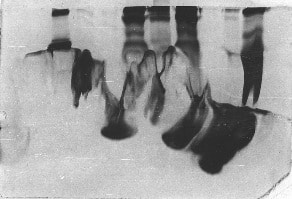For Western blot data to be reliable, it is important that you load known amounts of sample into each lane of the gel. This is of particular importance if you are doing a quantitative blot, where you really need to be able to compare band intensity in each sample. In this article, we’ll talk about different ways to equalize protein loading when running SDS-PAGE gels.
There are two main ways to ensure that you’re loading equal amounts of protein:
Using equal amounts of total protein
There are several ways to measure total protein content in your samples. Perhaps the most common method is the Bradford assay, which is a colour reactive assay. Other systems are available to use with samples that contain detergents, or are otherwise unsuitable for Bradford. The most commonly used standard for assays like the Bradford assay is BSA (bovine serum albumin), which has a somewhat atypical amino acid composition. A better option is BGG (bovine gamma globulin), which has an amino acid composition that is more reflective of an “average” protein. For a good discussion of different protein measurement techniques, see this article. Ensuring the wells have equal “total protein” when they are initially loaded will mean the results are comparable across your gels.
Using equal amounts of starting material
Another way to equalize loading is by equalizing the amount of starting material. This is easy to do if you quantify your samples by weight, chlorophyll content, or cell number before you begin your protein extraction. Cell number can be determined by counting on a hemocytometer or by measuring OD on a spectrophotometer. If your samples have dramatically different values for any particular parameter, then you can load different volumes of protein accordingly; for example, if sample A weighs twice as much a sample B, then you would load twice the volume of sample B for your gel.
Regardless of which technique you use to load consistent amounts of your sample, keep in mind that loading equal volumes in each well is the best approach. If the volumes you load in adjacent wells are significantly different, you can end up with “skinny” lanes that get compressed due to pressure from the overly full lanes. You can easily avoid this problem by adding loading buffer (which usually contains a dye and some inert heavy substance like glycerol) to smaller samples to equalize the volume.
For more information, check out this video from Agrisera.





